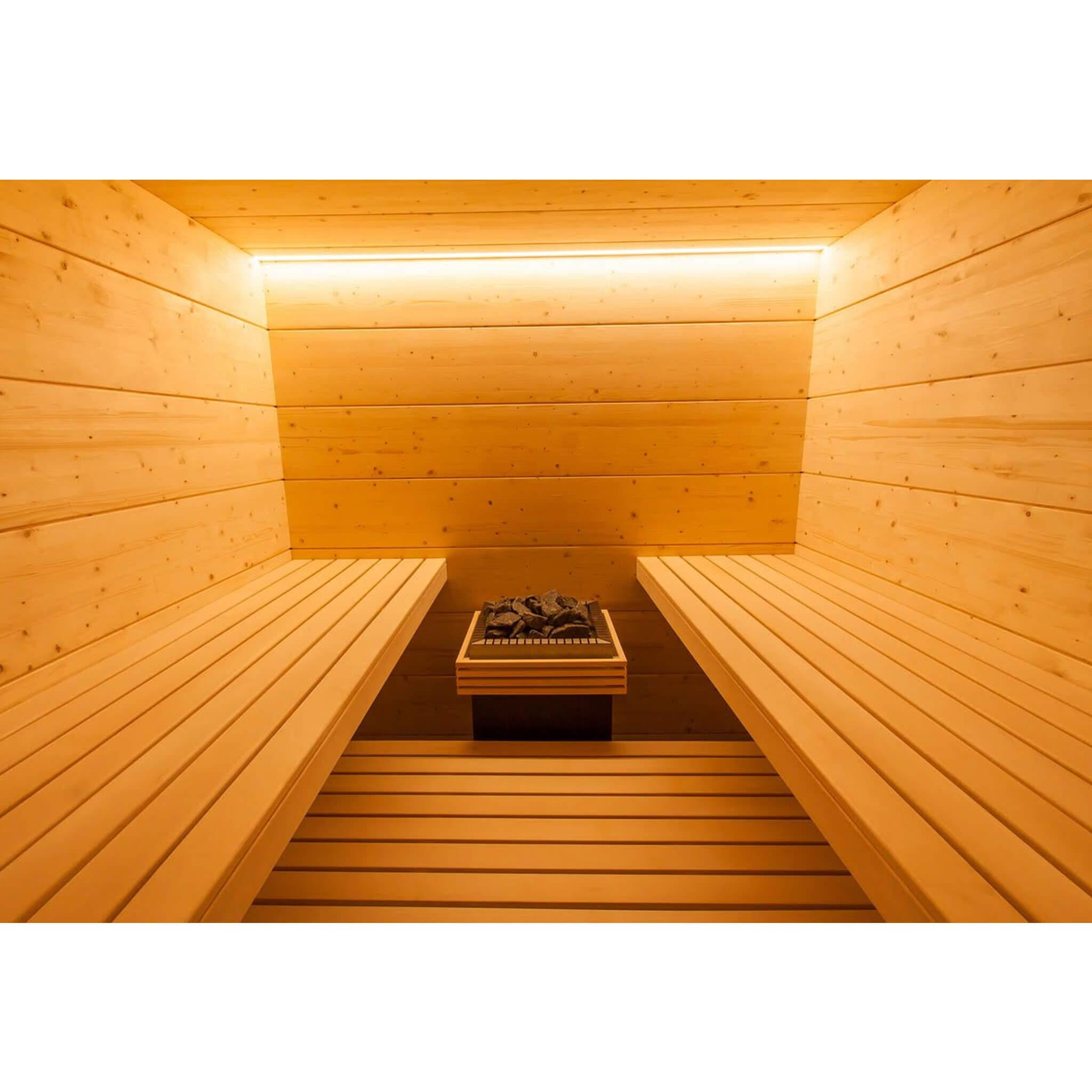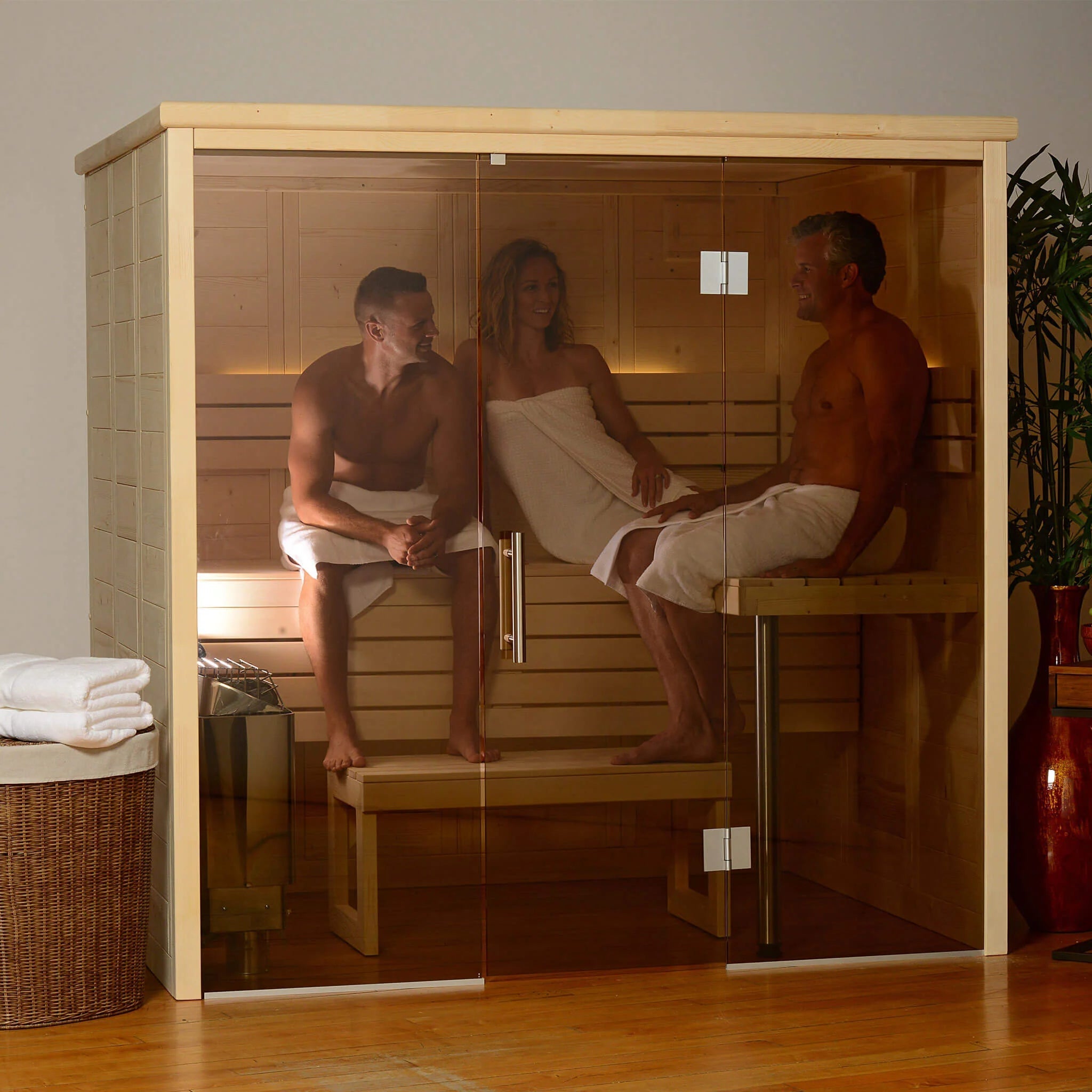Unknown Facts About Traditional Sauna
Wiki Article
Indicators on Traditional Sauna You Should Know
Table of ContentsNot known Facts About Traditional SaunaThe Basic Principles Of Traditional Sauna See This Report about Traditional SaunaThings about Traditional Sauna
A lot of the weight lost in a sauna is water loss and is re-gained upon rehydrating. Without an uncertainty sauna can be a crucial part of a healthy and balanced weight loss program. To take a look at the distinctions between traditional and IR saunas, I will certainly separate these into verifiable, theoretical, and made differences.Hence, the hottest point in the saunawhich is at the ceiling straight over the sauna heateris generally in between 185 and 190 F. Traditional Sauna. Claims that a typical sauna exceeds 200 F is simply not real and not suitable for electrical saunas marketed in the US. The temperature for a far-infrared sauna is usually established between 120 and 140 F; nevertheless, unlike the typical sauna, the goal in and IR space is not to attain a heat
As a result of this, the temperature level distinction is practically unimportant, since extreme sweating results in both sauna kinds, but the approach of heating up the body is different. In an IR sauna the bather will feel hot and will certainly sweat a lot, yet at a lot lower temperatures. Thus, if the goal is to invest longer amount of times in the sauna, the IR sauna is a great selection.

The Best Guide To Traditional Sauna
When the high temperature is attained, the elements cycle on and off to keep the heat. A lot of typical sauna users take pleasure in putting water over the rocks to develop steam to raise sauna moisture levels. The benefits of putting water over the rocks include: making the area a lot more comfortable, moistening the nasal flows, and permitting the usage of aromatherapy by blending important oils with the water.In a far-infrared sauna, the warm front penetrate the body to efficiently heat the body and raise the body core temperature. To achieve this raised temperature level, Far-infrared emitters produce infrared energy which is close to the very same wavelength as that which the body naturally emitsoften described as the "Essential Array" of 7 to 14 microns), so the energy is well gotten by the body.
When the energy goes into the body, it causes the body temperature to enhance and inevitably causes sweat. In an infrared sauna it is essential for the emitters/heaters to remain on practically frequently. Considering that there is no mass of rocks to retain warm, the sauna will cool down if the emitters shut down.
As discussed above, the sauna bather in an infrared room intends to place himself in front of running emitters to obtain maximum take advantage of the warm. The home heating time for the 2 spaces can be really various, depending on just how the rooms are utilized. For a conventional sauna, a bather must allow 30-40 mins for the area to accomplish a desired temperature and to effectively pre-heat the rocks.
The 7-Minute Rule for Traditional Sauna
A well created sauna will commonly achieve a temperature of 150-160 F in about 30-40 mins (Traditional Sauna). For hotter temperatures, the area might require to warmth for a longer period. Once the area achieves set temperature, the heating unit will cycle on and off, commonly running concerning 50% of the time. The shielded walls and the warmed rocks will certainly keep the area hot and at secure temperatures.To some, 15 minutes was "squandered" while the infrared energy heated up the wood get more panels as opposed to heating up a body, while others discover a pre-heated room to be a lot more comfy and think a raised starting temperature is required to begin perspiring. The size of recommended use for each space is about the very same (10-15 mins per session); nevertheless, because of the lower air temperatures and the ability to really feel the results of infrared warm quicker than a standard sauna, it is not unusual for an individual to invest a total of 20-30 mins in an infrared sauna.
Typical saunas often tend to be bigger official statement (for this reason make use of even more electricity) than infrared saunas, although standard saunas are absolutely available in one and 2 individual dimensions. For a two-person standard sauna, 5x6 or 5x7 size is most prominent. The leading bench can pleasantly seat 2 or 3 people and is likewise enough time to relax during the sauna session.


The ordinary expense per kWH of electricity in the U.S. is around $0.11, so a 4.5 kW heating system will cost about $.50 to compete one hour, if the heater runs constantly for one hour. Commonly a sauna heater will run for 75% of the very first hour and 50% of succeeding hours on since the components cycle once the set temperature is attained.
The Only Guide for Traditional Sauna
A 2 individual far-infrared room is usually literally smaller sized than a standard sauna, frequently concerning 4' x 4' or smaller. The IR furnace is typically 1.5-1.7 kW making use of a 120 volt 15 amp plug-in service. Because the room can be made use of earlier than a sauna room, we will certainly think the space is made use of for to of an hour including warm up time.There is a rarely gone over difference in the social experience in between the 2 spaces. While our society has lost some of the social benefit of the traditional sauna experience, it can be extremely socially fulfilling. From family members time in the sauna, to heart-felt discussions with loved ones, to sauna partiesthe traditional sauna experience can bring about intimate interacting socially.
Many higher end infrared rooms consist of colored light my latest blog post treatment, audio systems and full-glass fronts.
Report this wiki page